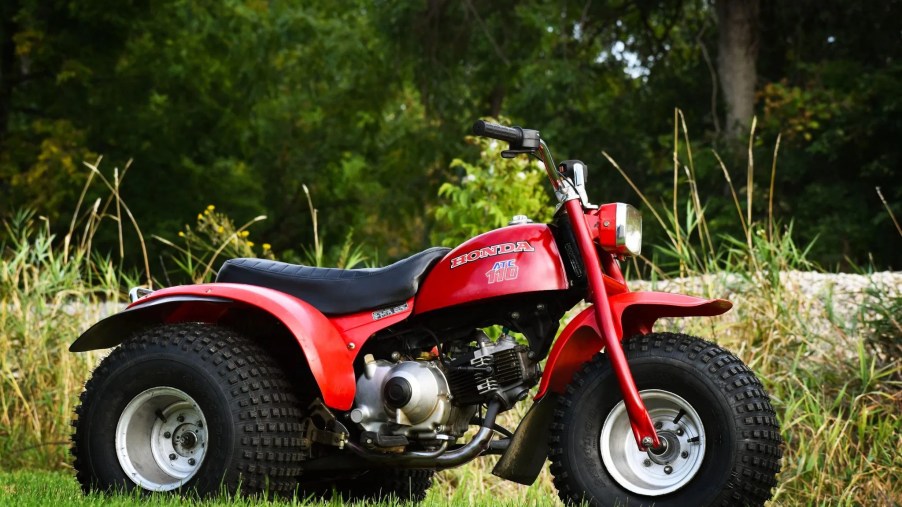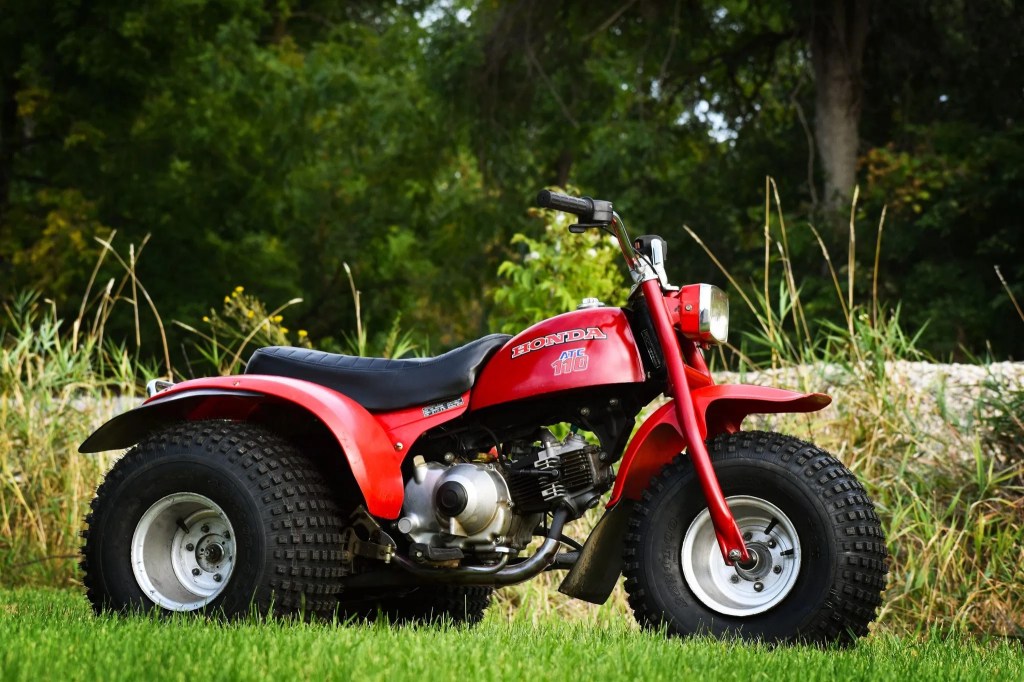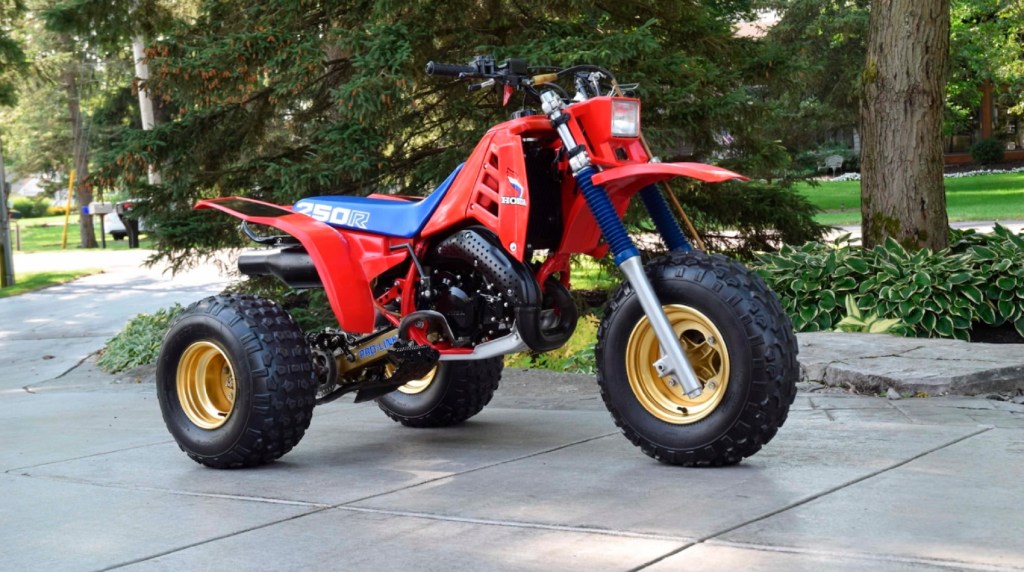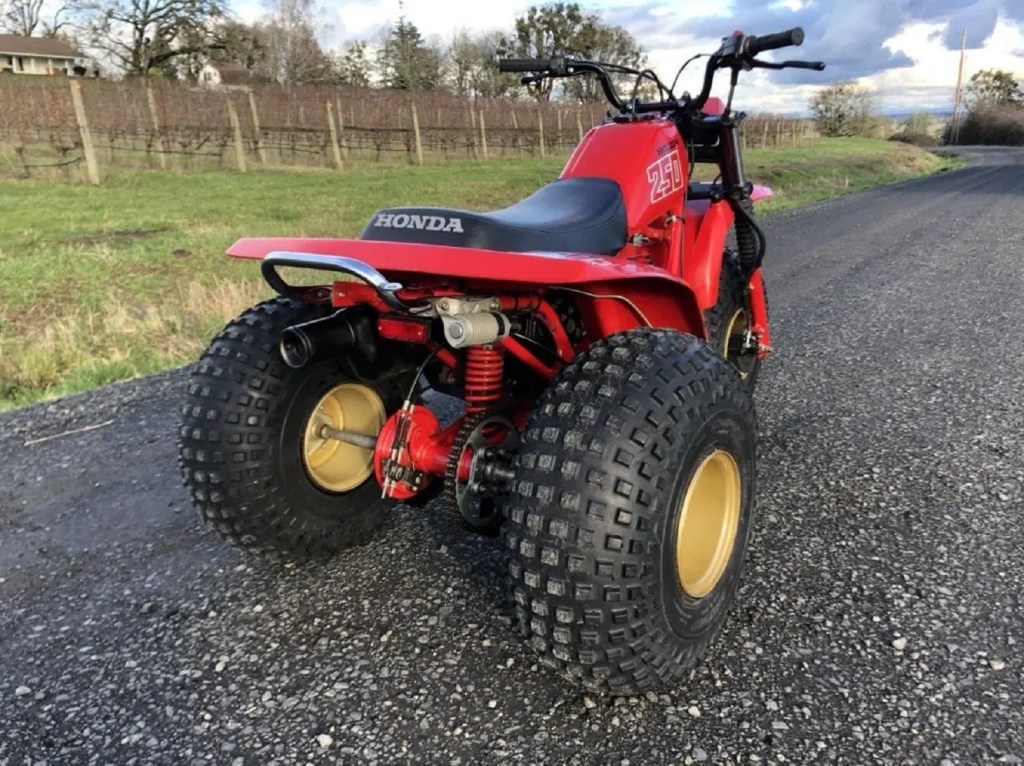
There’s a Very Good Reason You Don’t See 3-Wheeled ATVs Anymore
Whether you buy the brand-new model or a vintage one, the Honda Trail 125 is a great casual entry into motorcycle off-roading. And for those who prefer a bit more stability, Honda also has ATVs like the FourTrax Rancher. However, once upon a time, the Japanese brand had yet another offering: the 3-wheeled Honda ATC ATV. But it was too dangerous to stick around.
The Honda ATC ushered in a wave of 3-wheeled ATVs
The inspiration behind the Honda ATC was simple. Outside of places like California and Florida, most US motorcycle dealers have poor sales in the winter months. So, to bolster their business, Honda tried to create something that would work in the snow, Motorcyclist explains. However, the designers also wanted a machine that wouldn’t be totally useless in the summer—so, no snowmobiles, CarScoops reports. The result was the 1970 Honda ATC 90.
At the time, the term ‘all-terrain vehicle’ didn’t really exist. There were amphibious all-terrain vehicles, Autoweek reports, but they were military vehicles. As such, the 3-wheeled Honda All-Terrain Cycle (hence ‘ATC’) was arguably the first ATV. And it, along with its later evolutions, proved massively popular. During the ‘70s and ‘80s, roughly 80% of all ATVs had three wheels, PartDiscounter reports.

The first Honda ATC, the ATC 90, was fairly simple. Like a modern fat bike, it has extremely wide tires for traction. And, just like on a fat bike, they’re also a kind of pseudo suspension, Bicycling and Hemmings report. Plus, they make the 3-wheeled ATV somewhat buoyant, Mecum reports, almost like a mini Sherp.
The ATC 90’s 90cc four-stroke single-cylinder engine only makes 7 hp. However, like Honda’s Trail bikes, it has an automatic clutch and a dual-range 4-speed transmission. But despite having three wheels, there’s only one brake, RideApart reports.

Honda released larger- and smaller-capacity ATC models over the years. But arguably the best-remembered is the Honda ATC 250R first released in 1981. Unlike the other trikes, the 250R has a two-stroke single-cylinder engine and full suspension, Silodrome reports. Plus, both a front disc and a rear drum brake. In 1982 that rear drum was replaced by a disc, and the 1983-1984 models have more suspension travel and better brakes. And the 1985-1986 ATC 250Rs have more travel, stronger frames, a 6-speed manual, and a liquid-cooled engine.
3-wheeled ATVs like the Honda ATC have several inherent flaws, though
At first glance, 3-wheeled ATVs such as the Honda ATC models had a lot going for them. They were relatively cheap, simple, and significantly easier to balance on than dirt bikes. Perhaps too easy, though, as FortNine explains in the video (spicy language warning) below.
Trikes are more stable at rest than motorcycles, but at speed, the ATC’s layout posed several problems. Firstly, it has a rear-heavy weight distribution. So, if you go off-roading, it can tip backward on anything more than a minor slope. And if you jump it improperly, that heavy rear end can come down on your head.
Secondly, its singular front wheel makes it a ‘delta trike,’ Laidback Cycles explains; a 3-wheeled vehicle like the Polaris Slingshot is a ‘tadpole trike.’ While delta trikes aren’t unstable per se, their layout makes them more susceptible to turnovers than tadpole trikes, RQ Riley explains. And given that the ATC 250R was basically a racing trike, riders weren’t really taking it slow.
To be fair, as FortNine and DriveTribe explain, a skilled rider can counter-act a 3-wheeled ATV’s handling quirks. That’s done by shifting their body and bodyweight around. However, this presents another issue: most Honda ATC riders weren’t that skilled. In fact, many of them were children. They could reach the controls but weren’t tall enough to put their feet on the ground. Not to mention lightweight compared to the ATV.
Combine that with slippery pegs that dropped legs into wheels and a high center of gravity, and you get accidents. Also fatalities and, in some cases, amputations, FindLaw reports. And even once you factored out skill-level and age, the Consumer Product Commission found that 3-wheeled ATVs were 2.5-3 times as risky as 4-wheeled ones, Hemmings reports.
Used classic models are still around
As a result of mounting injuries and deaths, a stop-sale order meant 3-wheeled ATVs were pulled from the market in 1988. While trikes are still available, ATVs stick to the quad formation.

However, while Honda didn’t make more ATCs, the classic ones are still around. And they’re fairly affordable, though the 250Rs command a premium. You can pick up a basic ATC for $2000-$4000 on Bring a Trailer. And as for the 250R, a 1981 example sold on BaT for $6500 earlier in February 2021. Plus, some companies even make upgraded racing parts for the ATC.
Just be aware of the potential dangers—and don’t put your kid on one.
Follow more updates from MotorBiscuit on our Facebook page.


